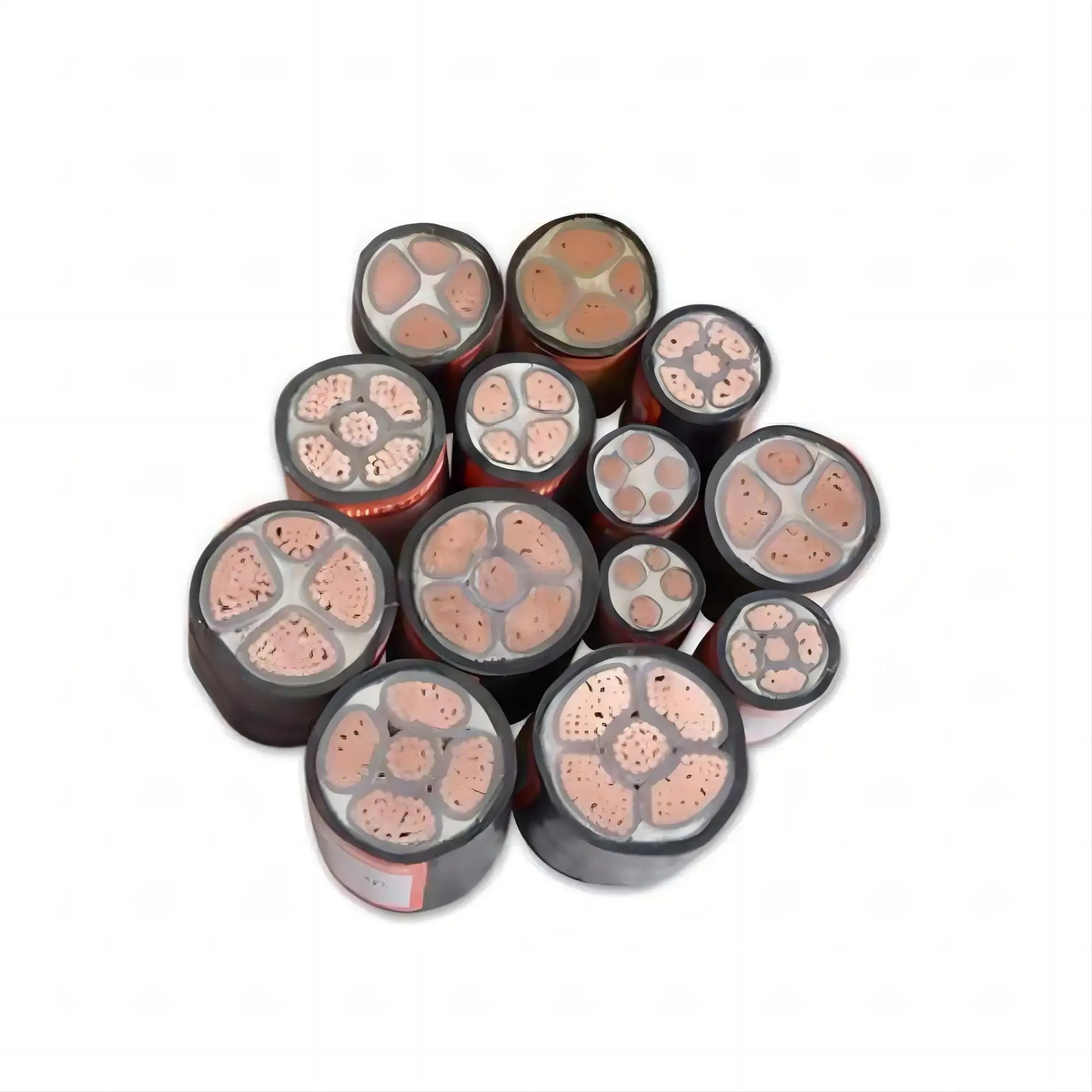Time: 2025-06-12 15:49:26 Source: Henan Province Jianyun Cable Co., Ltd.

Power cables transmit electricity and are categorized into low, medium, and high voltage grades for industrial equipment power supply. Materials such as XLPE or EPR are recommended for their heat resistance and electrical insulation properties.
Control cables transmit control signals, commonly used in automation and process control systems. Prioritize TPU or FEP materials for enhanced chemical resistance and flexibility.
Instrumentation cables are designed for measurement and control systems, requiring high precision and reliability. Shielded designs, such as those using copper or conductive polymers, are recommended to minimize electromagnetic interference.
Specialty cables, including welding, crane, and mining cables, are designed for specific industrial applications. Select materials like polyurethane for oil and fuel resistance based on environmental and mechanical stresses.
Allocate 10–15% of the system’s cost to cables, focusing on mid-range options to balance performance and affordability.
This section provides a comprehensive examination of the cost-quality relationship for industrial cables, addressing types, performance characteristics, and budgeting strategies as of June 12, 2025.
Industrial cables are critical components in electronic systems, transmitting power, data, or control signals. The cost-quality relationship varies by cable type, with specific considerations for each application.
Power cables transmit electricity from one point to another, designed to handle high voltages and currents for safe and efficient power distribution. Common conductor materials include copper or aluminum, with XLPE and EPR as prevalent insulation materials offering heat resistance and electrical performance. Low-voltage cables are used in residential, commercial, and industrial power distribution; medium-voltage cables power industrial equipment and machinery; and high-voltage cables support long-distance transmission, such as in substations and utility networks.
Control cables transmit control signals and monitor electrical systems, commonly used in automation and process control. Materials like TPU and FEP provide chemical resistance and flexibility, while shielded designs, such as copper or conductive polymers, reduce electromagnetic interference, particularly in noisy environments.
Instrumentation cables are used in measurement and control systems, requiring high precision and reliability. Shielding is critical, with options including aluminum foil (cost-effective but less durable), copper (superior EMI protection but costlier), or conductive polymers/braids (flexible, with costs varying by material). Materials like FEP and PTFE are suitable for extreme temperatures and chemical exposure.
Specialty cables, such as welding, crane, and mining cables, are tailored for specific industrial applications. Material choices, such as polyurethane for oil and fuel resistance or EPR for high temperatures, are driven by environmental and mechanical stresses.
The cost-quality relationship is often debated, with minimal perceptible differences for power transmission in standard applications. In professional or harsh environments, higher-cost cables may offer benefits in durability, repairability, and handling.
No definitive evidence suggests expensive cables last longer. A $2 cable lasting two years is more cost-effective over time than a $20 cable. However, robust construction, such as TPU or EPR in crane cables, can extend lifespan in demanding applications, supported by warranties and repairable connectors.
Allocate 10–15% of system cost to cables, focusing on mid-range options like XLPE or TPU cables to ensure performance without overspending.
Marketing often exaggerates benefits, using terms like “oxygen-free copper” or “gold-plated connectors.” Without objective testing, such claims are suspect. Prioritize cables meeting industry standards, such as IEC or UL, to avoid overhyped features.
| Cable Type | Typical Cost Range | Quality Impact | When to Spend More |
|---|---|---|---|
| Power Cables | $5–$50+/meter | Heat resistance and electrical insulation critical; XLPE and EPR suitable for high loads | High-voltage applications, long-distance transmission, harsh environments requiring durability |
| Control Cables | $10–$100+/meter | Chemical resistance and flexibility important; shielding reduces EMI, TPU and FEP suitable | Automation systems, noisy environments, frequent handling requiring durability |
| Instrumentation Cables | $5–$50+/meter | High precision and reliability critical; shielding (e.g., copper) reduces interference, FEP and PTFE for extreme conditions | Measurement control systems, extreme temperatures, or chemical exposure |
| Specialty Cables | $10–$100+/meter | Specific application needs; polyurethane for oil/fuel resistance, EPR for high temperatures | Welding, crane, or mining applications, specific environmental needs |
For most users, cost-effective cables suffice for power transmission, with minimal quality differences. For control and instrumentation cables, slight improvements may occur, but durability and handling often justify higher costs in professional or harsh environments. Budgeting 10–15% of system cost for mid-range cables ensures performance without overspending. Consumers should prioritize empirical evidence and industry standards, remaining skeptical of marketing claims.